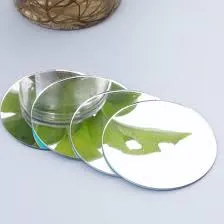

The Price of Patterned Glass An In-Depth Analysis
Patterned glass, renowned for its aesthetic appeal and functional benefits, is increasingly becoming a focal point in architecture and interior design. This unique type of glass is produced with various textures and designs, allowing it to diffuse light while ensuring privacy. Its application spans residential, commercial, and decorative use. However, understanding the factors that influence the price of patterned glass is essential for consumers, designers, and builders alike.
1. Types of Patterned Glass
The first step in understanding the pricing of patterned glass is to recognize the different types available on the market. Common variations include
- Frosted Glass This type provides a translucent effect, obscuring views while allowing light to filter through. It is often used in bathrooms and office partitions. - Textured Glass Available in numerous designs, textured glass can create various visual effects and is frequently used in doors and windows to add a decorative touch.
- Laminated Patterned Glass This consists of multiple layers, providing enhanced durability and safety. It is particularly popular in commercial settings where security is a concern.
- Custom-Patterned Glass For bespoke installations, custom designs can be produced, though these typically come at a higher price point due to the specialized production process.
2. Production Methods
The method of production significantly impacts the cost of patterned glass
. Common methods include- Rolled Glass Production Involves passing molten glass through patterned rollers, creating a texture. This process is efficient for mass production, thereby reducing costs.
- Sandblasting A manual or semi-automated method that etches patterns into the glass surface. While it allows for intricate designs, it often results in higher costs due to the labor involved.

- Acid Etching Similar to sandblasting, but uses acid to create patterns. This method offers a smooth finish and can produce detailed designs, but also raises production costs.
- Digital Printing A modern method where designs are printed directly onto the glass. While this allows for exceptional detail and customization, the equipment and technology required can be expensive, impacting the final price.
3. Market Trends
The demand for patterned glass has been on the rise, influenced by current design trends. As more consumers lean toward minimalistic and functional aesthetics, the relevance of patterned glass continues to grow. The increasing popularity of sustainable and energy-efficient materials also drives demand. Companies that produce patterned glass are now focusing on eco-friendly options, which can affect pricing depending on the materials and production techniques employed.
4. Geographical Factors
Pricing can vary significantly based on geographical location. Regions with a higher demand for construction and renovation may experience elevated prices due to increased competition for materials. Conversely, areas with fewer suppliers might see limited options, leading to higher costs for patterned glass. Additionally, local regulations regarding building materials can also influence pricing.
5. Installation Costs
It is essential not only to consider the price of patterned glass itself but also the associated installation costs. Professional installation is often recommended to ensure the glass is handled correctly, especially for larger or custom pieces. Depending on the complexity of the installation and local labor rates, costs can add significantly to the overall expenditure.
6. Conclusion
The price of patterned glass is influenced by a myriad of factors ranging from production methods and material choice to market demand and geographical variances. While it may initially seem like a significant investment, the benefits of using patterned glass—such as enhanced privacy, aesthetic appeal, and versatility—can justify the expense. For consumers and designers, understanding these intricacies is crucial for making informed decisions that align with both budget constraints and design aspirations. As the market evolves, staying abreast of these factors can help in navigating the complex landscape of patterned glass options available today.